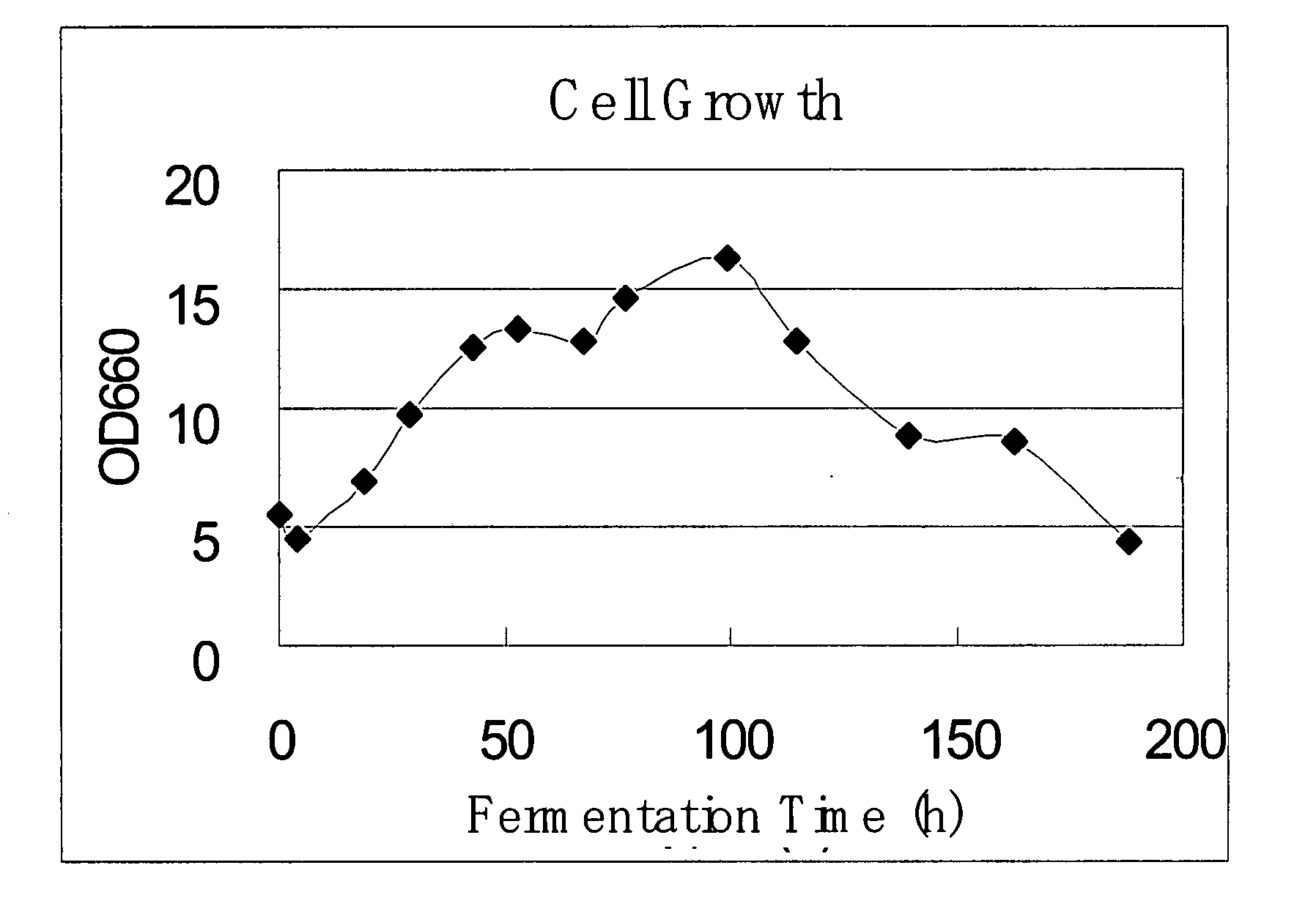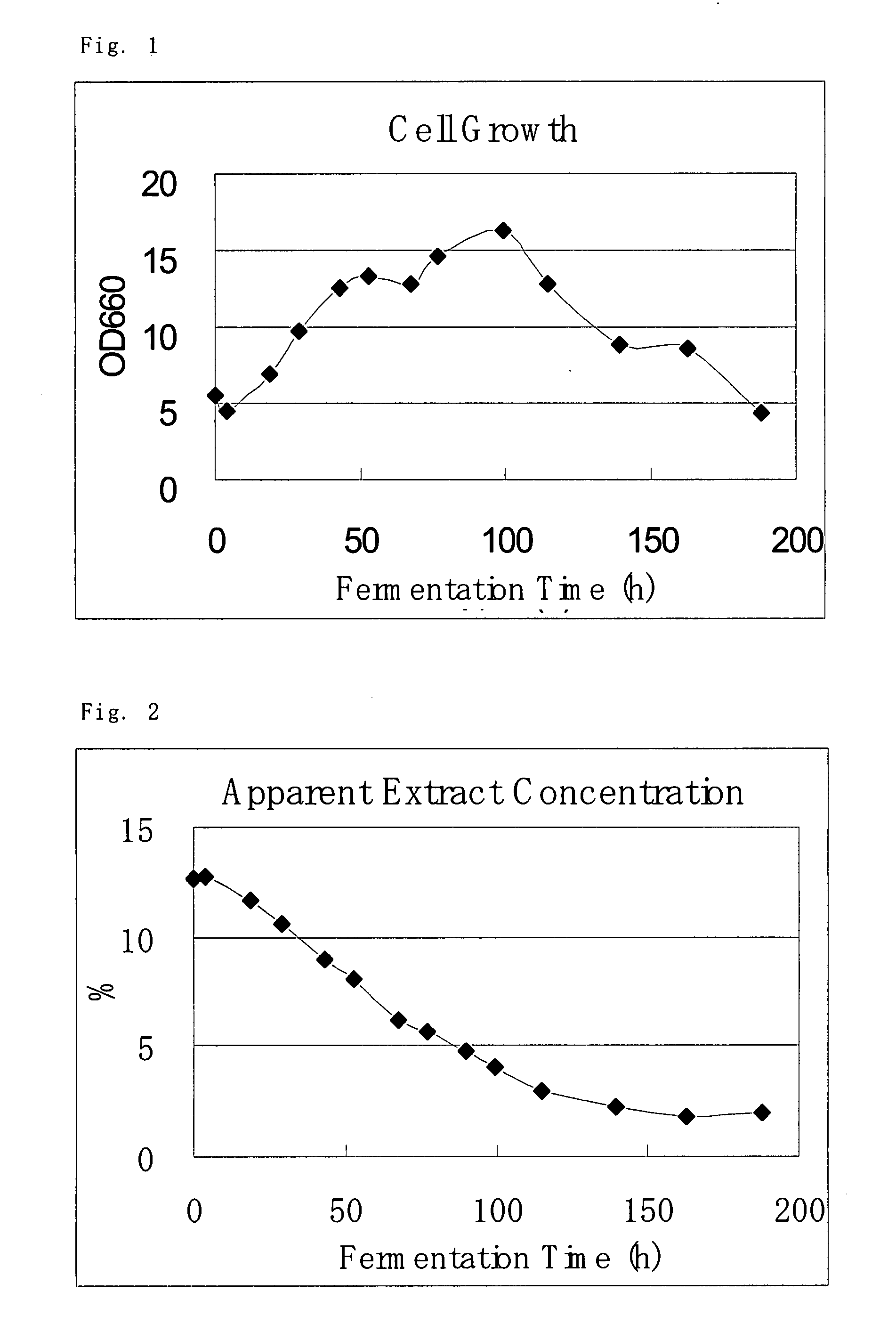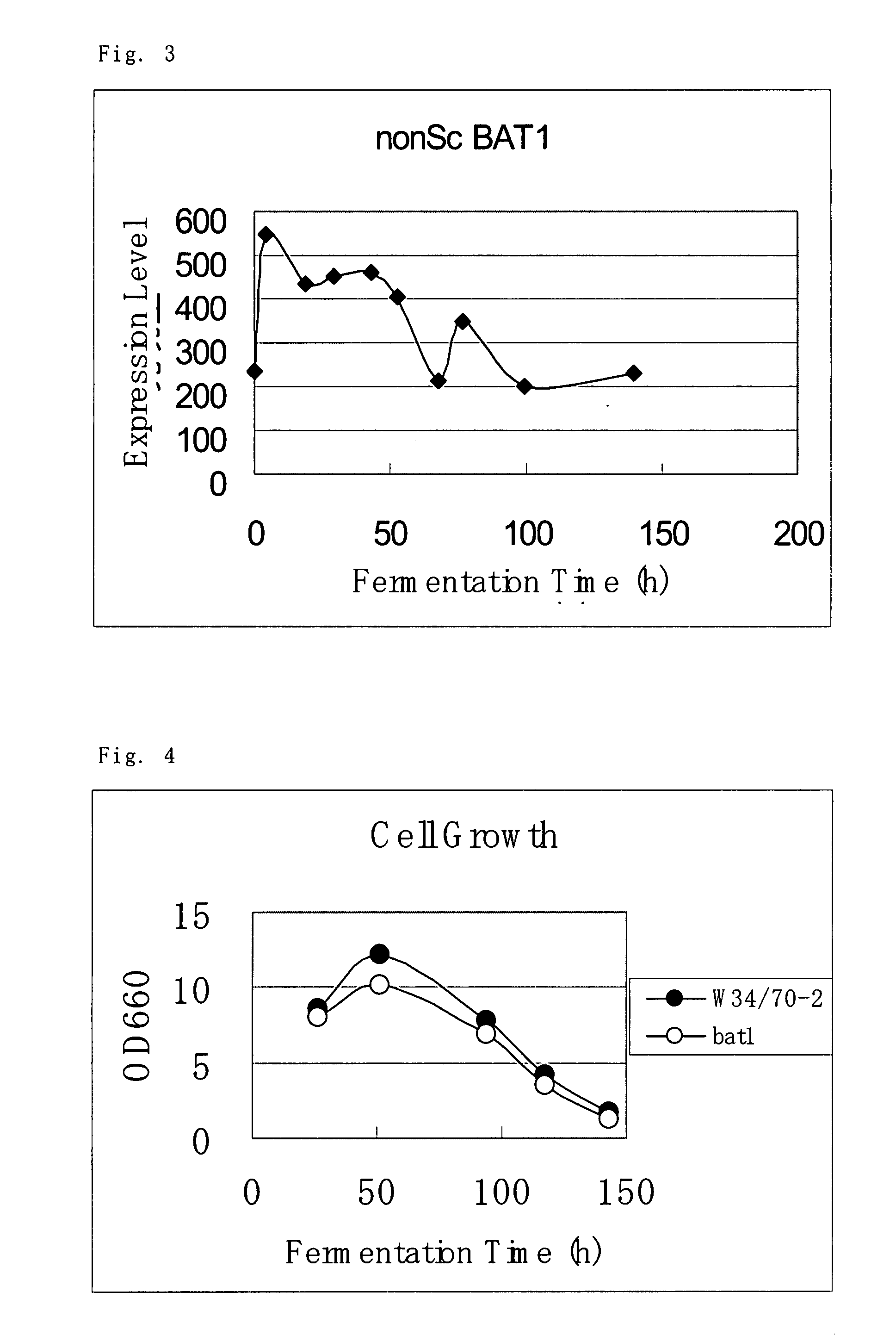Branched-chain amino acid aminotransferase gene and use thereof
- Summary
- Abstract
- Description
- Claims
- Application Information
AI Technical Summary
Benefits of technology
Problems solved by technology
Method used
Image
Examples
example 1
Cloning of Novel Branched-Chain Amino Acid Aminotransferase Gene (NonScBAT1)
[0077]We found a novel branched-chain amino acid aminotransferase gene, nonScBAT1 (SEQ ID NO:1), unique to a beer yeast, as a result of a search utilizing the comparison database described in Japanese Laid-Open Patent Application No. 2004-283169. Based on the acquired nucleotide sequence information, primers nonScBAT1_for (SEQ ID NO:5) and nonScBAT1_rv (SEQ ID NO:6) were designed to amplify a full-length gene. PCR was carried out using chromosomal DNA of a genome sequencing strain, Saccharomyces pastorianus Weihenstephan 34 / 70 strain, also abbreviated to “W34 / 70 strain”, as a template to obtain a DNA fragment (about 1.2 kb) including the full-length gene of nonScBAT1.
[0078]The thus-obtained nonScBAT1 gene fragment was inserted into pCR2.1-TOPO vector (Invitrogen) by TA cloning. The nucleotide sequence of nonScBAT1 gene was analyzed according to Sanger's method (F. Sanger, Science, 214, 1215, 1981) to confirm...
example 2
Analysis of NonScBAT1 Gene Expression During Beer Fermentation
[0079]A beer fermentation test was conducted using a lager brewing yeast, Saccharomyces pastorianus Weihenstephan 34 / 70 strain and then mRNA extracted from yeast cells during fermentation was analyzed by a beer yeast DNA microarray.
Wort extract concentration12.69%Wort content70LWort dissolved oxygen concentration8.6ppmFermentation temperature15°C.Yeast pitching rate12.8 × 106 cells / mL
[0080]The fermentation broth was sampled with time to observe the amount of yeast growth (FIG. 1) and apparent extract concentration (FIG. 2) with time. At the same time, the yeast strain was sampled, from which mRNA was prepared, biotin labeled, and hybridized to a lager brewing yeast DNA microarray. The signal was detected using a GeneChip Operating System (GCOS; GeneChip Operating Software 1.0, Affymetrix). An expression pattern of nonScBAT1 gene is shown in FIG. 3. From this result, nonScBAT1 gene was confirmed to be expressed upon usual ...
example 3
Disruption of NonScBAT1 Gene
[0081]According to the publication (Goldstein et al., yeast. 15 1541 (1999)), PCR using a plasmid including a drug-resistant marker (pFA6a (G418r)) as a template was conducted to prepare a fragment for gene disruption. As PCR primers, nonScBAT1_delta_for (SEQ ID NO:9) and nonScBAT1_delta_rv (SEQ ID NO:10) were used.
[0082]The fragment for gene disruption prepared by the method above was used to transform a spore cloning strain (W34 / 70-2) separated from beer yeast Saccharomyces pastorianus W34 / 70 strain. Transformation was carried out as described in Japanese Laid-Open Patent Application No. 07-303475, and transformants were selected in a YPD plate medium (1% yeast extract, 2% polypeptone, 2% glucose, 2% agar) containing 300 mg / L Geneticin.
PUM
| Property | Measurement | Unit |
|---|---|---|
| Fraction | aaaaa | aaaaa |
| Fraction | aaaaa | aaaaa |
| Temperature | aaaaa | aaaaa |
Abstract
Description
Claims
Application Information
 Login to View More
Login to View More - R&D
- Intellectual Property
- Life Sciences
- Materials
- Tech Scout
- Unparalleled Data Quality
- Higher Quality Content
- 60% Fewer Hallucinations
Browse by: Latest US Patents, China's latest patents, Technical Efficacy Thesaurus, Application Domain, Technology Topic, Popular Technical Reports.
© 2025 PatSnap. All rights reserved.Legal|Privacy policy|Modern Slavery Act Transparency Statement|Sitemap|About US| Contact US: help@patsnap.com



